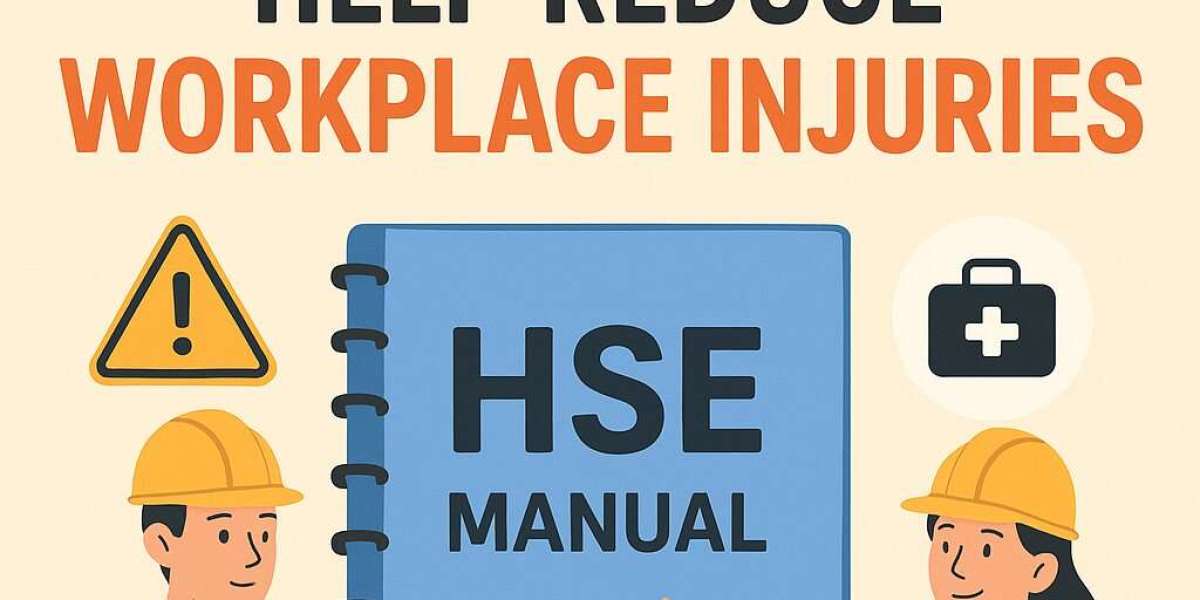 Workplace safety is one of the most important concerns for any organization, regardless of its size or industry. Every day, thousands of workers across the world are exposed to risks such as slips, falls, chemical exposure, equipment accidents, and ergonomic hazards. To address these risks systematically, organizations rely on a structured framework known as the Health, Safety, and Environment (HSE) Manual. An HSE Manual is not just a document; it is a comprehensive guide that outlines policies, procedures, and best practices to create a safe and healthy working environment. One of its most critical benefits is its ability to reduce workplace injuries.
Workplace safety is one of the most important concerns for any organization, regardless of its size or industry. Every day, thousands of workers across the world are exposed to risks such as slips, falls, chemical exposure, equipment accidents, and ergonomic hazards. To address these risks systematically, organizations rely on a structured framework known as the Health, Safety, and Environment (HSE) Manual. An HSE Manual is not just a document; it is a comprehensive guide that outlines policies, procedures, and best practices to create a safe and healthy working environment. One of its most critical benefits is its ability to reduce workplace injuries.
This article explores how HSE Manual contributes to injury reduction and why they are essential tools for building a safe workplace culture.
- Establishing Clear Safety Policies
An HSE Manual provides organizations with a structured way of setting clear safety policies. These policies define the company’s commitment to protecting employees, visitors, and contractors from harm. When workers understand what is expected of them—such as wearing personal protective equipment (PPE), reporting hazards, or following lockout/tagout procedures—they are less likely to engage in risky behaviors that could lead to injuries.
By formalizing these safety policies in writing, the HSE Manual ensures consistency across departments and locations, leaving no room for misinterpretation.
- Identifying and Controlling Hazards
One of the core functions of an HSE Manual is hazard identification and control. The manual usually outlines procedures for conducting workplace risk assessments, evaluating potential hazards, and developing controls to mitigate them. For example, a construction company’s HSE Manual may specify protocols for working at heights, while a chemical manufacturer’s manual may provide detailed handling and storage procedures for hazardous substances.
By proactively identifying risks and providing clear control measures, the manual helps organizations prevent incidents before they occur.
- Promoting Training and Competence
Workplace injuries often occur due to a lack of training or misunderstanding of safe practices. An HSE Manual includes guidelines for employee training, covering areas such as equipment operation, emergency response, first aid, and safe lifting techniques.
Through consistent training programs guided by the HSE Manual, employees gain the competence needed to perform their jobs safely. This not only reduces the likelihood of accidents but also builds confidence among workers, encouraging them to make safety-conscious decisions.
- Standardizing Procedures Across the Organization
In many organizations, particularly large or multinational ones, inconsistent safety practices can lead to confusion and accidents. The HSE Manual acts as a standard reference point, ensuring that safety procedures are consistent across all sites and departments.
For instance, if the manual specifies how to conduct a risk assessment or use a specific piece of equipment, every worker, regardless of location, follows the same steps. This standardization reduces the chances of injuries caused by miscommunication or variations in practice.
- Encouraging Employee Involvement
A well-structured HSE Manual emphasizes the role of employees in maintaining workplace safety. It typically includes requirements for reporting hazards, participating in safety committees, and contributing to incident investigations. By involving employees in the safety process, organizations create a sense of ownership and accountability.
When workers are actively engaged in safety initiatives outlined in the ready to use HSE Manual, they become more vigilant and proactive in preventing injuries, not only for themselves but also for their colleagues.
- Supporting Emergency Preparedness
Emergencies such as fires, chemical spills, or equipment failures can cause severe injuries if not handled properly. The HSE Manual provides detailed emergency response procedures, ensuring employees know what to do in critical situations.
Clear evacuation routes, fire drill procedures, and spill response protocols outlined in the manual reduce panic and confusion during emergencies. This preparedness significantly minimizes injury risks and protects lives.
- Driving Continuous Improvement
The best HSE Manuals are not static documents—they evolve with time. Regular reviews and updates ensure the manual reflects new hazards, updated regulations, and lessons learned from past incidents. This commitment to continuous improvement helps organizations adapt and reduce the likelihood of recurring injuries.
- Building a Strong Safety Culture
Beyond technical procedures and policies, an HSE Manual contributes to the creation of a strong safety culture. When management demonstrates its commitment to implementing and enforcing the manual, employees recognize that safety is a core value, not an afterthought.
This cultural shift reduces complacency, improves communication about hazards, and ensures that safety becomes part of daily routines. A strong safety culture is one of the most effective ways to reduce workplace injuries over the long term.
Conclusion
Workplace injuries can have devastating consequences, not only for workers but also for organizations in terms of lost productivity, higher insurance costs, and reputational damage. The HSE Manual is a powerful tool to minimize these risks by establishing clear policies, identifying hazards, standardizing procedures, and promoting employee involvement. By fostering training, preparedness, and continuous improvement, the manual ensures that safety becomes an integral part of operations.



